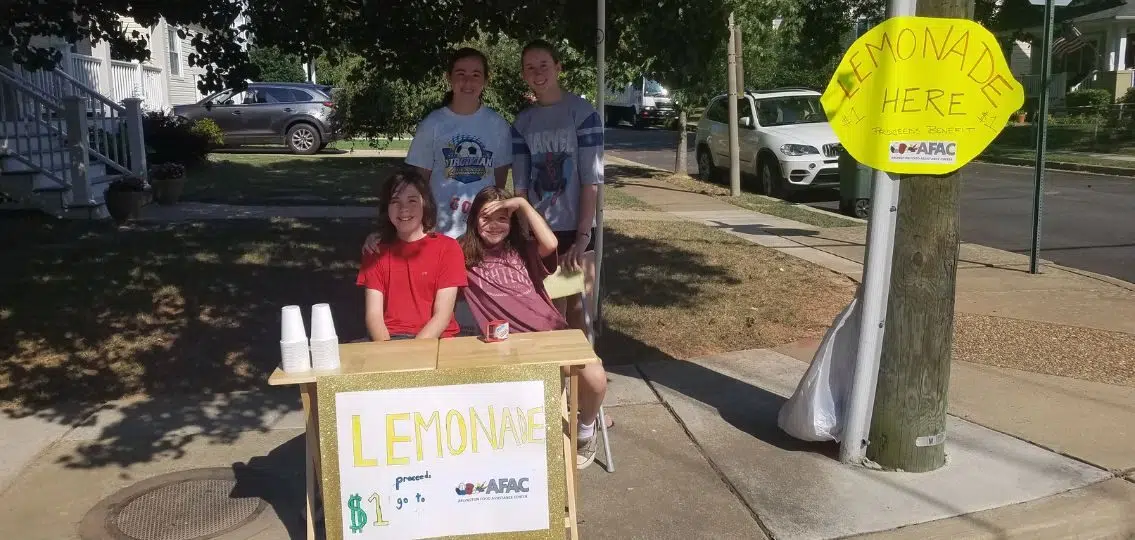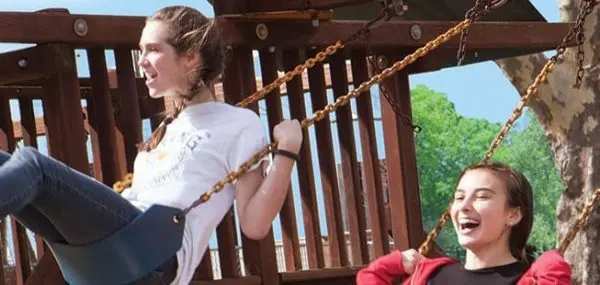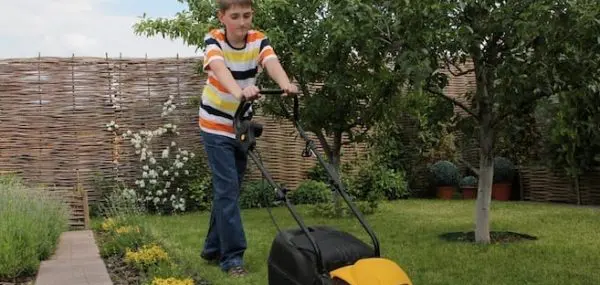“When are we doing the lemonade stand?” my 13-year-old son asked me one day last August. I smiled at the question. For the past eight years, I have reserved one week every summer—usually, the last one before school starts up again—for a series of activities I’ve organized for my kids, along with some neighbor children. We’ve dubbed this homegrown experience “Camp Kim.” From the very beginning, I included a service element. We donate the proceeds from our lemonade stand to a charity the kids choose. Our beneficiaries have included the local food bank, an animal shelter, and hurricane victims.
When my son was younger, it was easy to keep him and his friends occupied with ice cream cones and Legos during Camp Kim. As they became middle schoolers, however, I thought for sure that they would lose interest in mom-directed activities. Instead, because we’ve made this service project a tradition, my “campers” continued to look forward to mixing up pitchers of lemonade, drawing signs, lugging a cooler out to the street corner, pouring drinks, and counting change—all under a beating-hot sun.
It turns out that finding ways for middle schoolers to give back to their community and help others is a good way to engage them during the long summer break when many tweens are feeling at loose ends. It can be a tough age: Middle schoolers are often too old for most summer camps and too young to work in retail or food service. And for many parents, having their tweens Velcroed to the couch all summer with no structure is a non-starter. I’m lucky that my work schedule allows me to take a week off to run Camp Kim, but other parents might not have that option. What to do?
Summer Activities for Middle Schoolers
CIT programs develop your tween’s leadership skills.
Camp counselor-in-training (CIT) programs offer one solution, allowing middle schoolers to take on greater leadership roles with children younger than them, while still participating in camp activities. Before the pandemic, Calvary Kids Camp in Arlington, Virginia, for example, employed 14 to 16 middle-school-aged CITs in its summer day camp. Presently, during the pandemic, the camp is running at reduced capacity and with no middle-school CITs; they are likely to use them again in the future, however.
Summer volunteering helps your tween become a charitable adult.
According to the Calvary Kids Camp director and Alexandria, Virginia schoolteacher Maggie Posey, service projects were always part of their program. She says, “The service component is very important in what we do. Research has shown that when kids are engaged in summer community service, it becomes part of their lives as adults.”
Try mixing up their summer schedule with a good balance of freedom and structure.
When it comes to the summer schedule, Jennifer Folsom, author of Ringmaster: Work, Life, and Keeping It All Together, advises parents to mix it up. For instance, parents could sign middle schoolers up for a CIT or leadership development program, then give them a week or two at home. After that, they might go visit grandparents, then do another camp or program, and so on, so the kids are getting both the freedom they crave at this age and the structure they still need.
Help your tween self-direct by providing an activity checklist.
When your child is spending the day home alone, Folsom advises that they have a checklist of activities, which might include chores, exercise, music practice, or some other kind of enrichment.
“On those days when the middle schoolers are going to be left home alone, you have to build in some fail-safes,” she says. “It could be 30 minutes of reading, or practicing Spanish on the Duolingo app, or some other verifiable thing.” Vigilance is required, she adds, and partnering with other parents with same-aged kids can be helpful, perhaps to take turns being the available or on-call grown-up in a given week.
Suggest a classic starter job, or encourage your tween to create one that fills a niche.
Folsom also says that middle school is an ideal age for tweens to pick up classic starter jobs like babysitting, dog-walking, or lawn mowing. Or kids can get creative in finding some other niche in their community they can fill—such as watering plants or collecting recycling.
Although I’m still working out the exact combination of activities my tween and teen will do this summer, I feel pretty confident that another charity lemonade stand will be involved. On a bright day in August, look for us on the corner.




